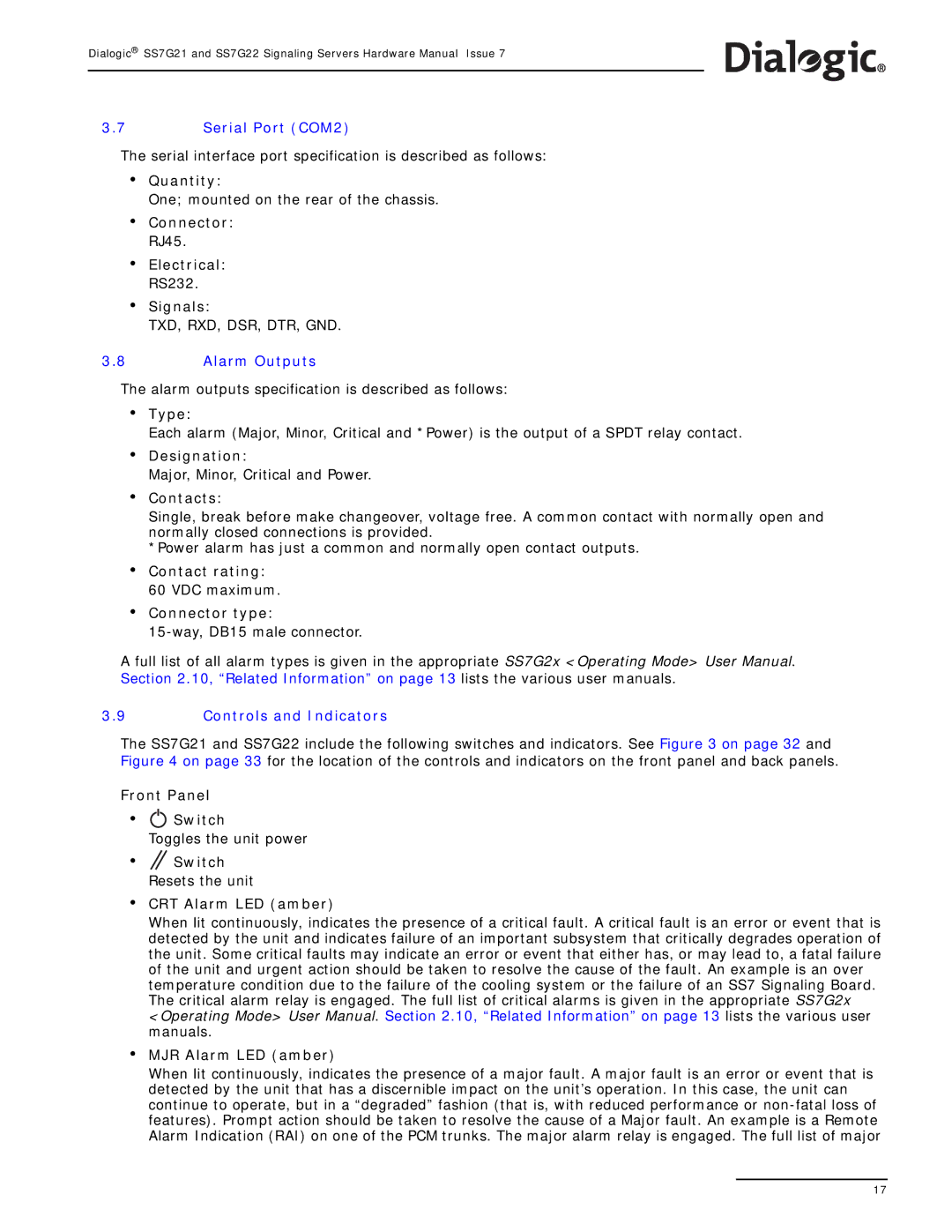
Dialogic® SS7G21 and SS7G22 Signaling Servers Hardware Manual Issue 7
3.7Serial Port (COM2)
The serial interface port specification is described as follows:
•Quantity:
One; mounted on the rear of the chassis.
•Connector: RJ45.
•Electrical: RS232.
•Signals:
TXD, RXD, DSR, DTR, GND.
3.8Alarm Outputs
The alarm outputs specification is described as follows:
•Type:
Each alarm (Major, Minor, Critical and *Power) is the output of a SPDT relay contact.
•Designation:
Major, Minor, Critical and Power.
•Contacts:
Single, break before make changeover, voltage free. A common contact with normally open and normally closed connections is provided.
*Power alarm has just a common and normally open contact outputs.
•
•
Contact rating:
60 VDC maximum.
Connector type:
A full list of all alarm types is given in the appropriate SS7G2x <Operating Mode> User Manual. Section 2.10, “Related Information” on page 13 lists the various user manuals.
3.9Controls and Indicators
The SS7G21 and SS7G22 include the following switches and indicators. See Figure 3 on page 32 and Figure 4 on page 33 for the location of the controls and indicators on the front panel and back panels.
Front Panel
•
•
•
![]() Switch
Switch
Toggles the unit power
![]() Switch
Switch
Resets the unit
CRT Alarm LED (amber)
When lit continuously, indicates the presence of a critical fault. A critical fault is an error or event that is detected by the unit and indicates failure of an important subsystem that critically degrades operation of the unit. Some critical faults may indicate an error or event that either has, or may lead to, a fatal failure of the unit and urgent action should be taken to resolve the cause of the fault. An example is an over temperature condition due to the failure of the cooling system or the failure of an SS7 Signaling Board. The critical alarm relay is engaged. The full list of critical alarms is given in the appropriate SS7G2x <Operating Mode> User Manual. Section 2.10, “Related Information” on page 13 lists the various user manuals.
•MJR Alarm LED (amber)
When lit continuously, indicates the presence of a major fault. A major fault is an error or event that is detected by the unit that has a discernible impact on the unit’s operation. In this case, the unit can continue to operate, but in a “degraded” fashion (that is, with reduced performance or
17
